I have a real fascination with 1930s fashion and needlework magazines and have built up quite a collection of them now. Throughout my entire collection, I definitely think that this Butterick Sewing Pattern Book from the summer of 1938 is my favourite. Not only is everything featured in it exactly the sort of 1930s fashions I absolutely love, but it’s also jam-packed with full-colour illustrations, something that’s quite rare during this period.
Unlike my the Vogue Sewing Pattern Book from 1935, I previously showed you (here and here), the fashions in this Butterick one are much more every day, wearable pieces and you can just imagine the average woman walking around in them. This book sadly has half the pages that the Vogue one does, but 50 pages of stunning 1930s fashion inspiration is enough for me when it’s presented so beautifully.
In this post I’ve chosen my favourite pages from the first half of the book and will post a ‘Part 2’ soon. I hope you enjoy them as much as me! Oh, and you can click on each image to view a larger image. Have a read of some of the text, it’s fabulous!
I love the above two-page spread, it reminds me so much of the more modern ‘street-style’ features you see in fashion magazines and websites today. It’s fantastic how they’ve taken photographs of every day women, in real situations and then shown Butterick sewing patterns you can use to create the same sort of look. I wonder if the ladies in the photographs were photographed specifically for the magazine or if they were snapped without their knowledge.
These last two pages are my absolute favourites throughout the book as they really are a vintage seamstresses dream. Look at those amazing colour fabric swatches! Oh, to be able to buy those now.
The last page describes the fabrics, explaining the look they create and the type of fabric they are. I absolutely love reading pages like this as it gives me so much inspiration for creating more authentic pieces. However, often the types of fabric have long gone out of fashion and they’re really hard to get hold of, especially in the UK.
I’ve tried countless times to look for sharkskin (a lightweight, wrinkle-free smooth worsted fabric that has a two-tone look), pique (a woven fabric characterised by raised parallel cords or fine ribbing to create a waffle-like texture) and percale (a closely woven plain-weave fabric with a high thread count – now found mostly in bed linen) and had no luck. All three were quite common in the 30s dressmaking and it’s so irritating that you can’t get it now. 🙁
Anyway, which outfit is your favourite? For me, it’s got to be that yellow playsuit with the navy trim. Or perhaps it’s the white cotton dress with the brightly coloured embroidered bolero. Nope, it’s definitely the three-piece set on the cover. Oh, there’s too many to choose from!
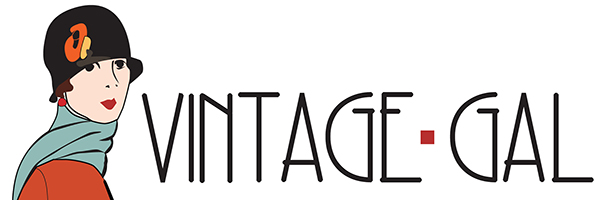







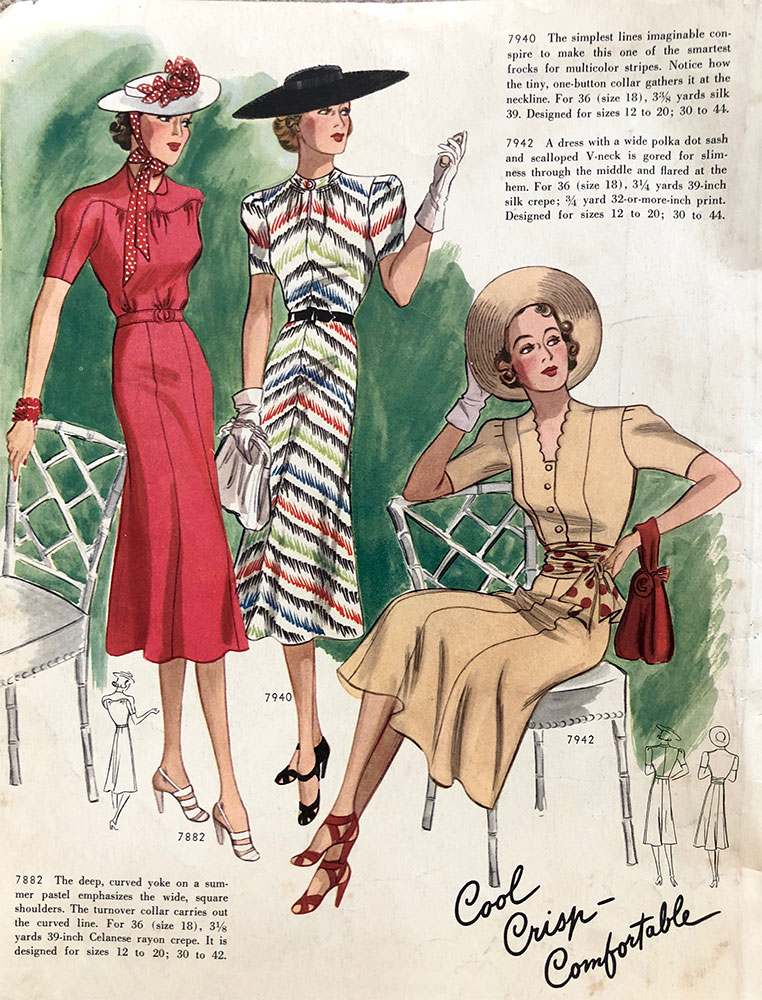
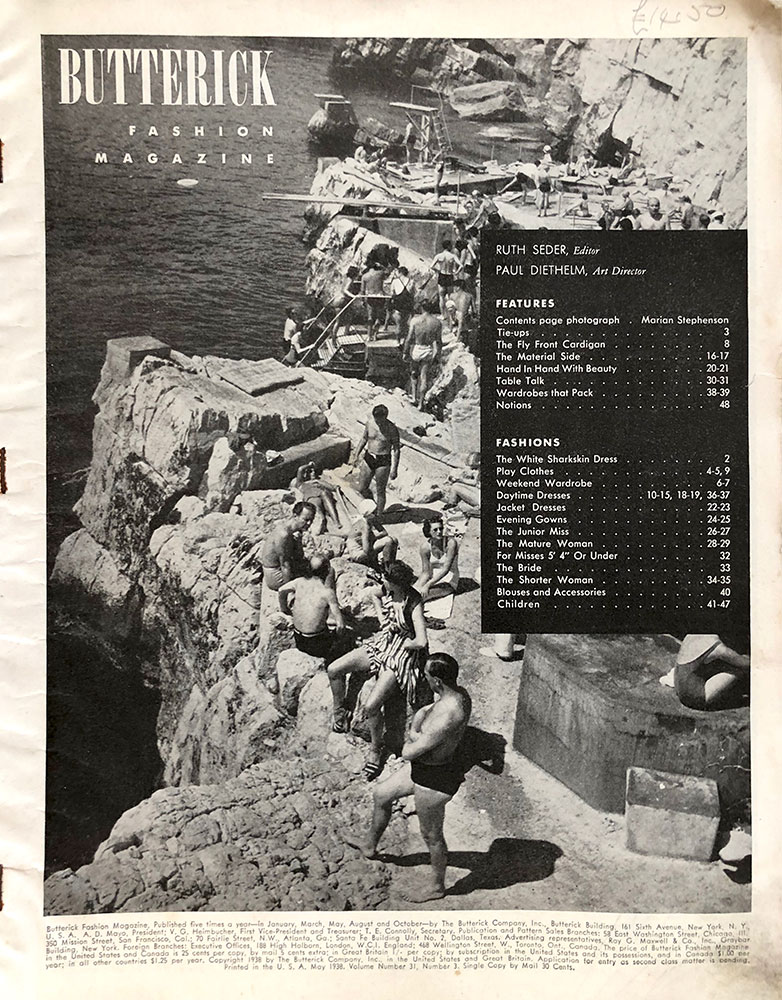
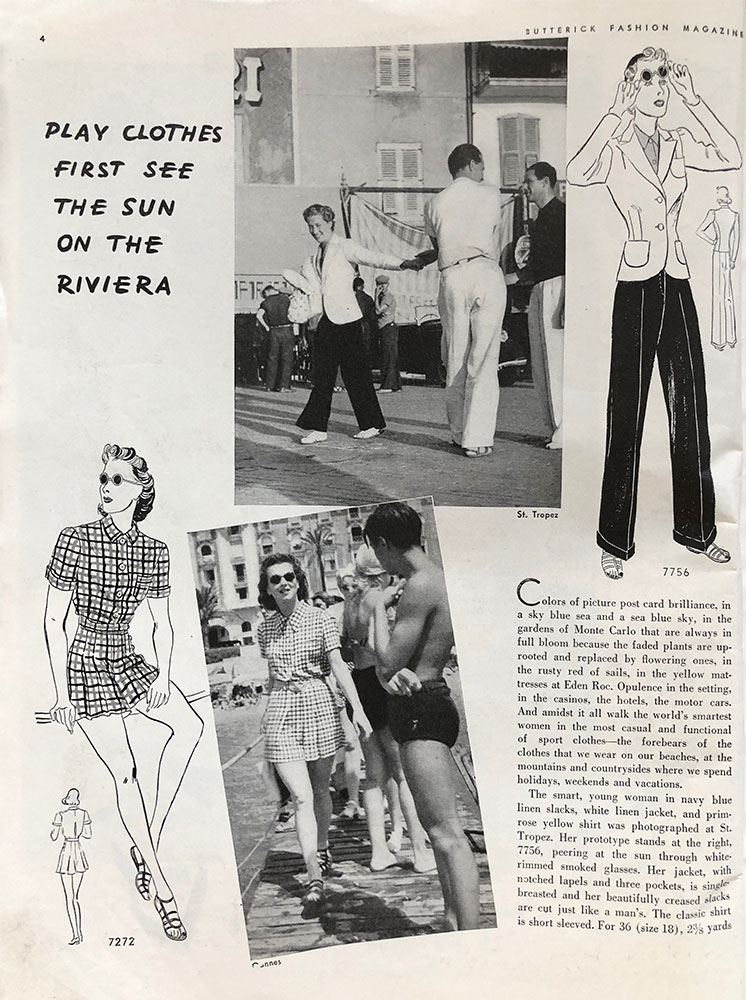
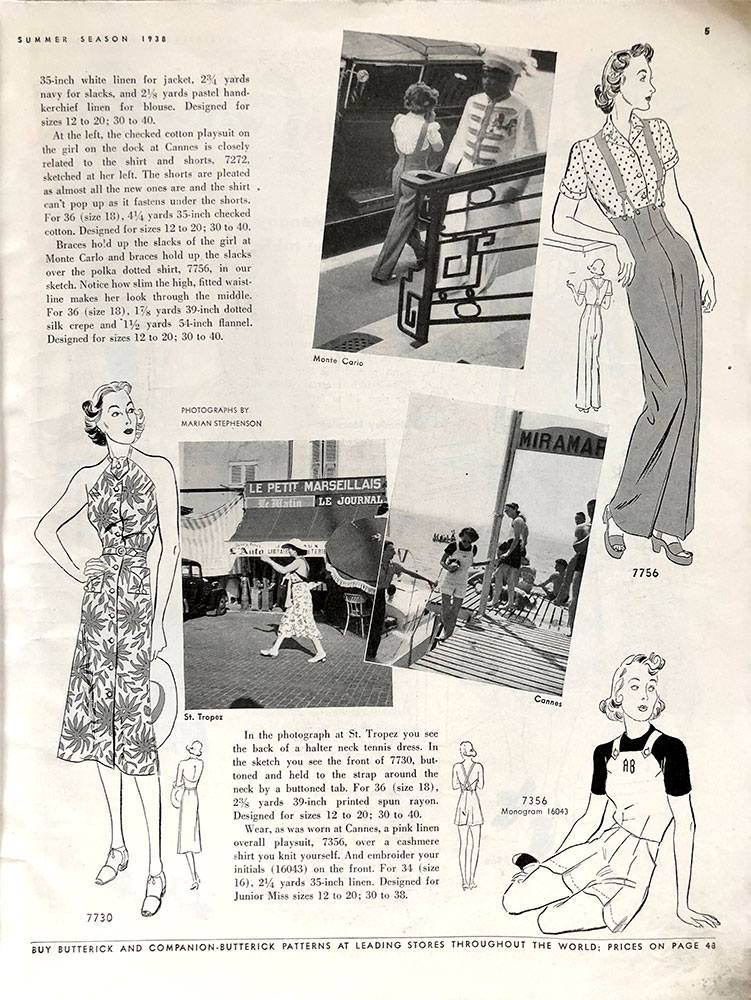
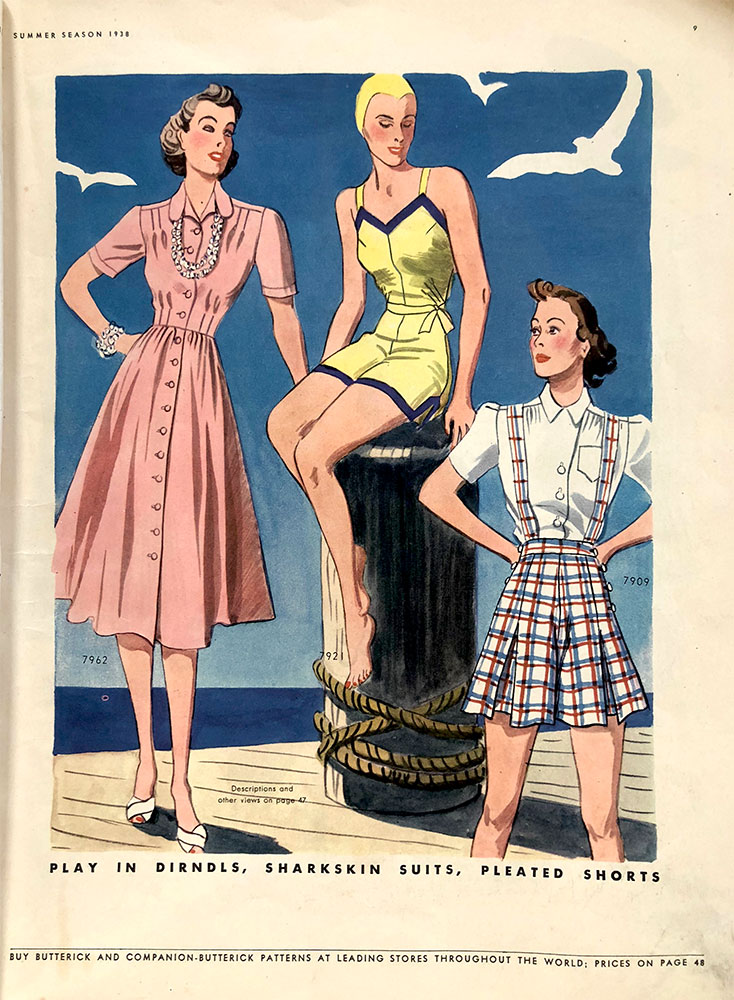
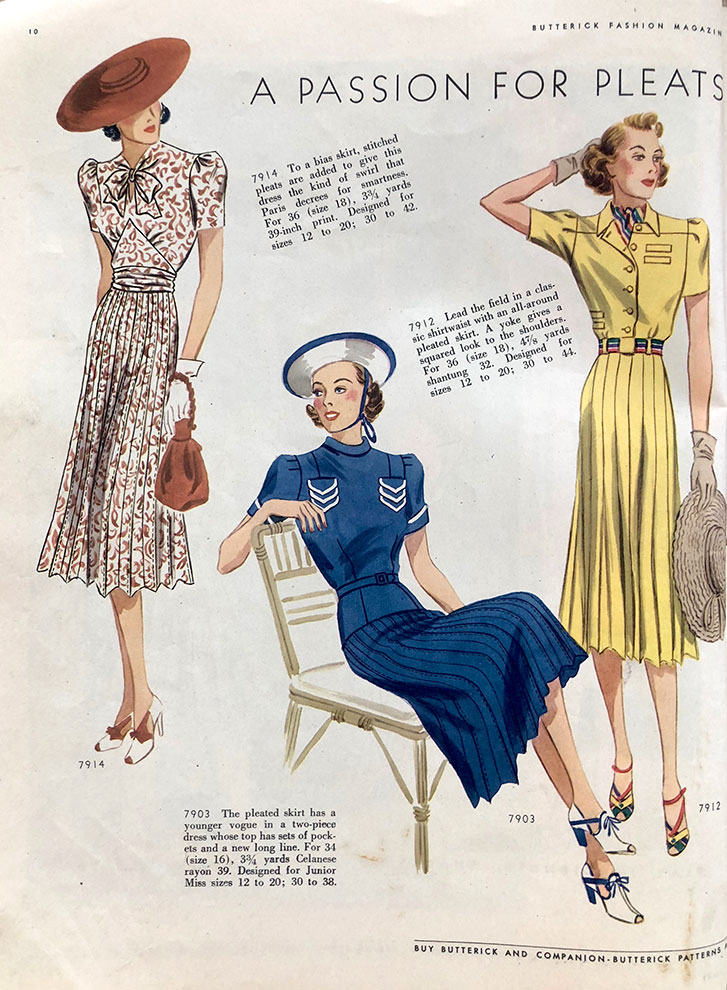
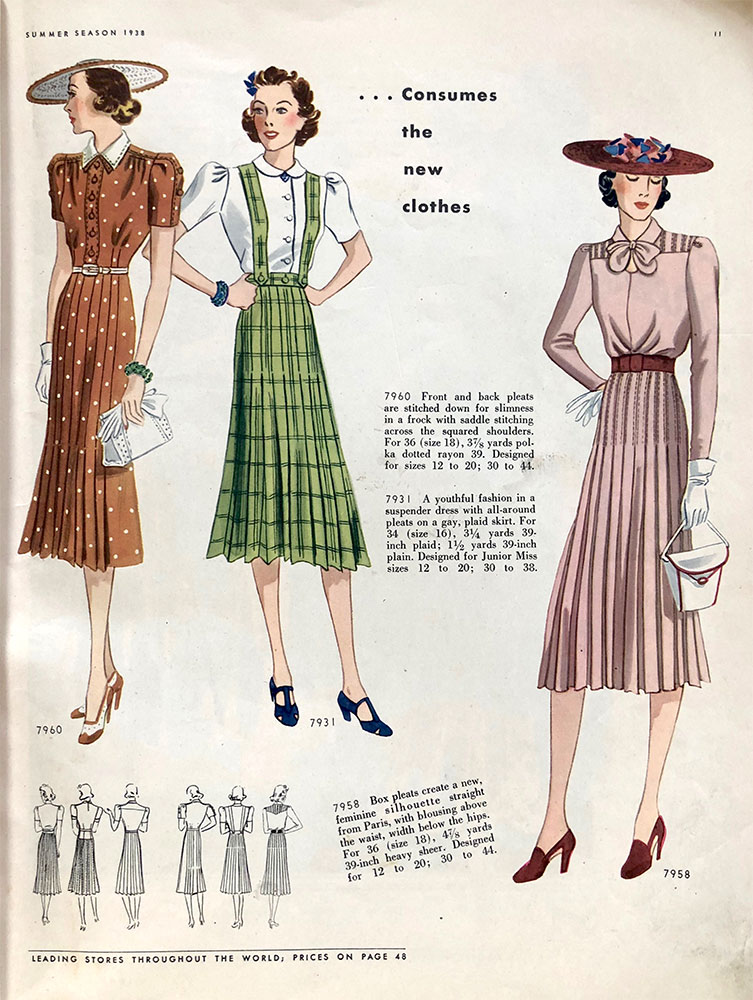
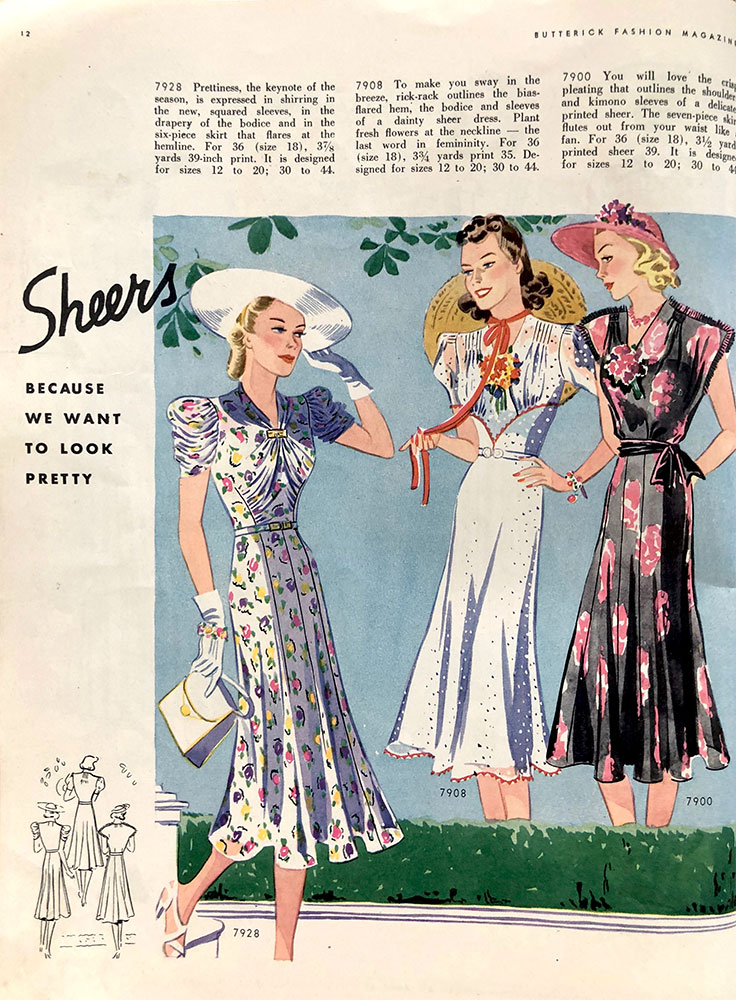
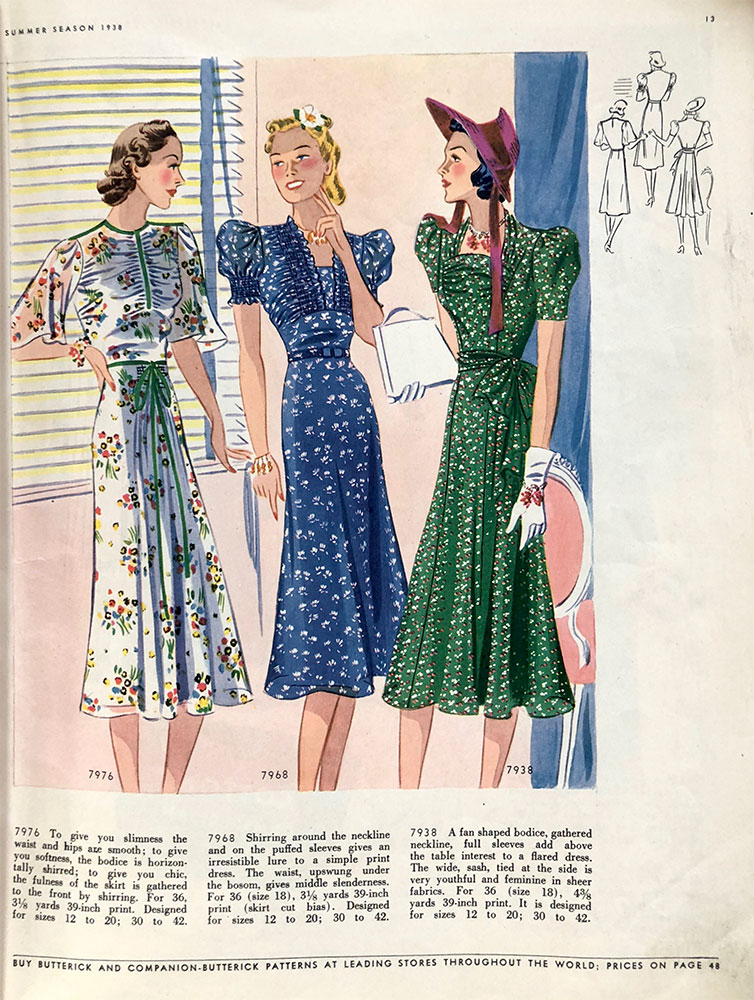
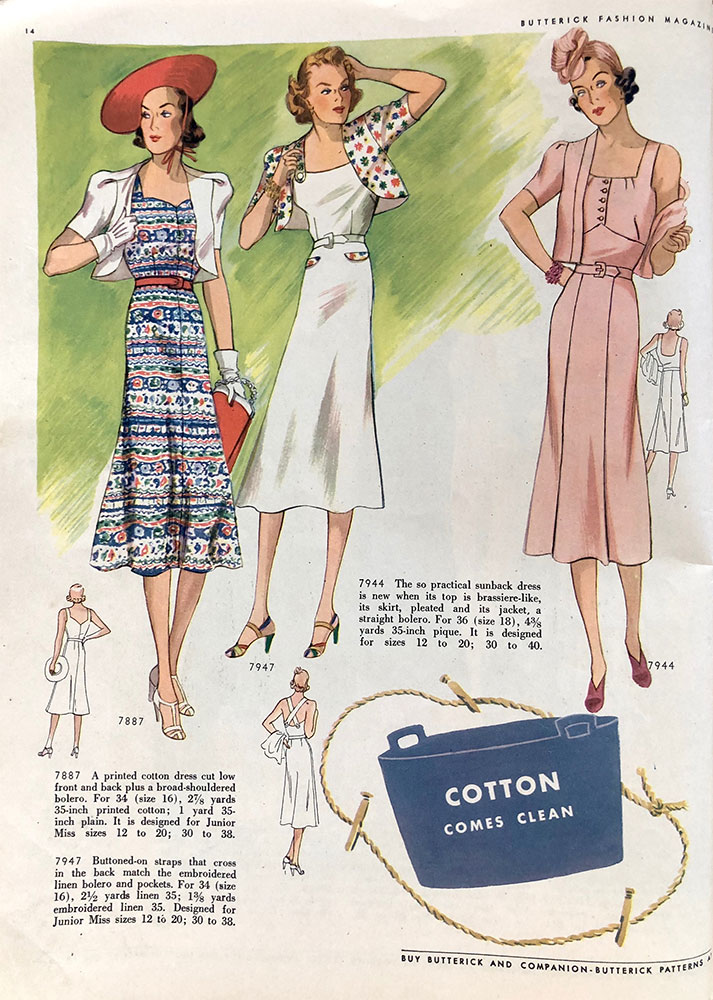
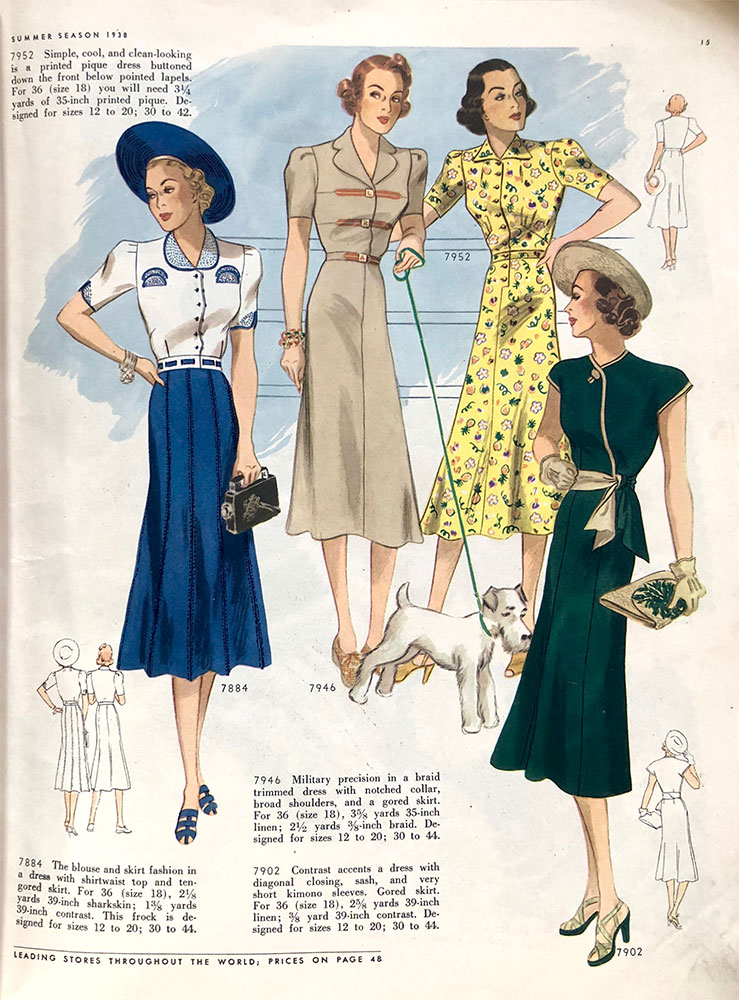
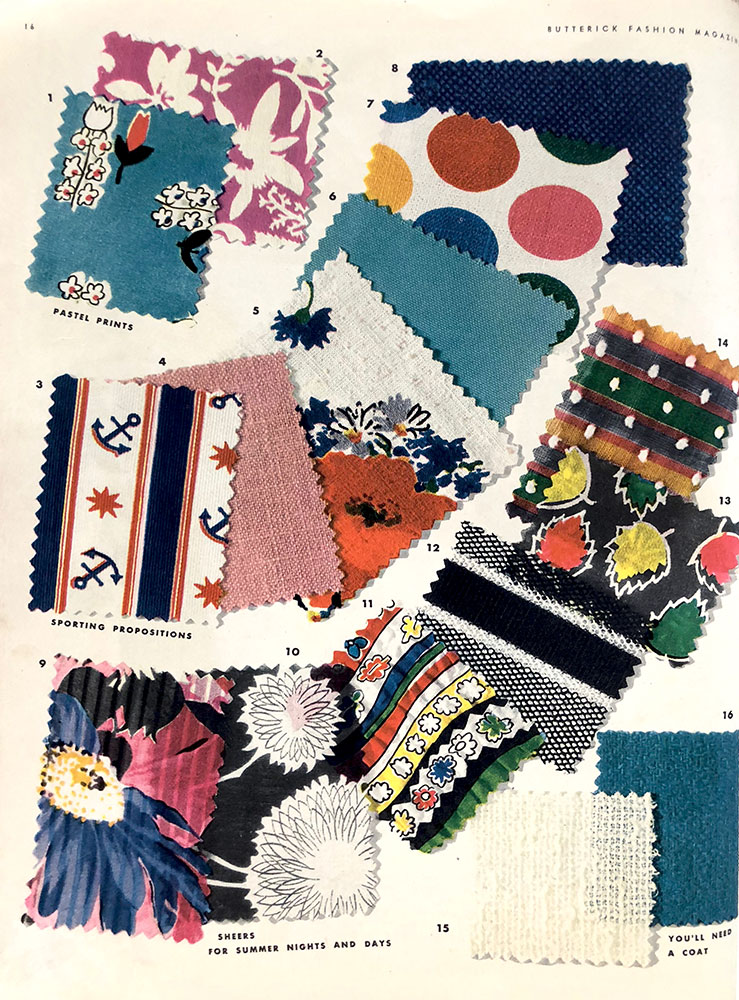
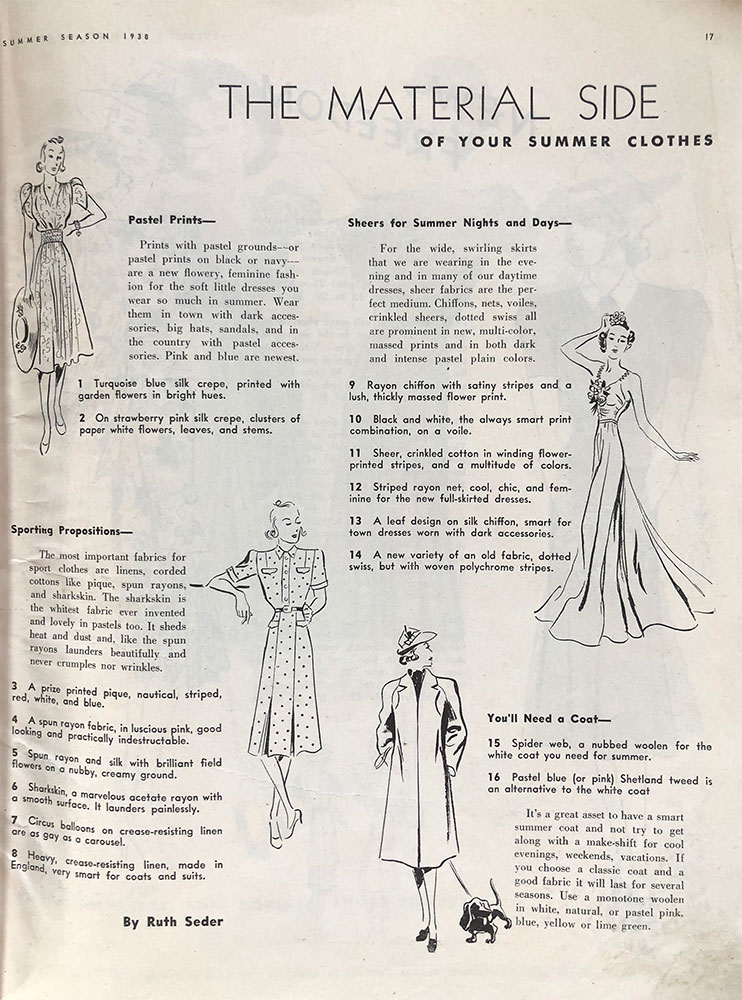

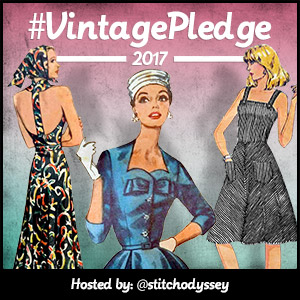
I love the black dress with the gold sash but they are all very beautiful 1930 fashion was so elegant
Oh, yes, that one’s lovely, although I think it’s actually a very dark green. It’s definitely got a green tone to it. xx
They are all fabulous! They look so wearable. I imagine that you don’t have to wear anything special under them either? I mean, for example, if you wear a fifties full skirted dress, you feel that you should be wearing the correct underwear. These thirties’ dresses look as though you could wear anything you like under them.
With things like the playsuits and more casual pieces they wouldn’t have worn anything special, in terms of lingerie, underneath. However, for the dresses and skirts and blouses, they would’ve worn a girdle or a corselette to keep the hips slim and smooth. You can see examples of both here – https://www.pinterest.co.uk/pin/26036504073699562/. They would’ve often worn a rayon or silk slip over the top as well as, again, it smooths the silhouette, something that was very important in the 30s. xx
I’m not surprised that Butterick Sewing Pattern Book is a favourite. The colour images of all those gorgeous fashions are irresistible. Thank you for sharing! xxx
They’re wonderful, aren’t they? Just such an amazing source of inspiration. xx
Thank you Cate for sharing this magazine full of inspiration. There is so much I would like to sew.
You’re welcome! Yes, there’s loads in here I want to sew. There’s never enough time! 🙁 xx
I love looking at all these old illustrations. The dresses are so wonderful. So wish I could sew:)
I have old knitting patterns from the forties, fifties, and sixties which my Mum had saved. It’s hard to find the proper yarn to use though. And hard to find someone in a yarn shop who is sufficiently skilled to help me choose. Still… I may give one of them a go this winter. The ski sweaters are to die for. But I knit so slowly, I may be well past the age where I can get on skis by the time I finish:)
Oh, do feel free to ask if you’re stuck with what yarn to use for vintage patterns. I’ve done absolutely loads of research for my crocheting and can usually find a good modern alternative for vintage yarns. I’m happy to help if you have any patterns in mind. xx
My mind is boggling at the thought of a pleated, bias skirt. The skill required to make one of those!
I know, right? Just the thought of battling with trying to set the pleats sends shivers down my spine. No wonder they’re stitched down right to the hem! xx
Thanks for sharing this! I love the blue and white shirtwaist dress with ten gored skirt and the sunback dresses with boleros! I think apparal fabrics are harder to find in general. Most of the fabric stores I’ve been in largely cater to quilters. Thank goodness for the internet! Although it would be amazing to go to your local fabric shop and browse through all those fantastic 1930s fabrics!
I love the white sundress with the colour print bolero. The way the dress is highlighted with the same print fabric is such a fab idea! I have to buy all of my fabric online, there’s absolutely nothing around where I live. The dressmaking industry in the UK (just like the fashion industry) is obsessed with polyester and polycotton and I absolutely hate both, they’re awful for 1930s clothes. It’s why I turn to organic fabrics, when I can, as I know there’s no polyester in them. xx
The red outfit on the second page and the green outfit at the end are super cute. But the best part is probably those last two pages. It really is such a shame we can’t get the same fabrics that garments used to be made out of! Thanks for sharing your treasure trove.
Best,
Quinn
Those two last pages are fabulous, aren’t they? I’ve read it and re-read it over and over again to absorb it all. xx
If you can only find percale as bedsheets, then buy the bedsheets and turn them into garments. I’ve made dresses from Waverly sheets and curtains because I loved the fabrics. Many a thrifty seamstress has done this sort of thing, including Scarlett O’Hara!
The only problem in the UK is that bedsheets are really boring. Percale ones come in a small variety of neutral plain colours. It’s hard to find bright colours in percale sheets, and patterned ones are non-existent. If you want patterned sheets the only option is novelty ones which are always done in cotton poplin, the same as the fabric you can get in fabric shops. It’s too stiff for 1930s clothing, so again, not the sort of thing I could use. xx
Thank you for taking the time to share this!
It’s very useful as I’m researching 1930’s summer wear for college.
Would you be able to share Page 47 so that we could see the variations and back detailing of the dress on the cover?
Best wishes